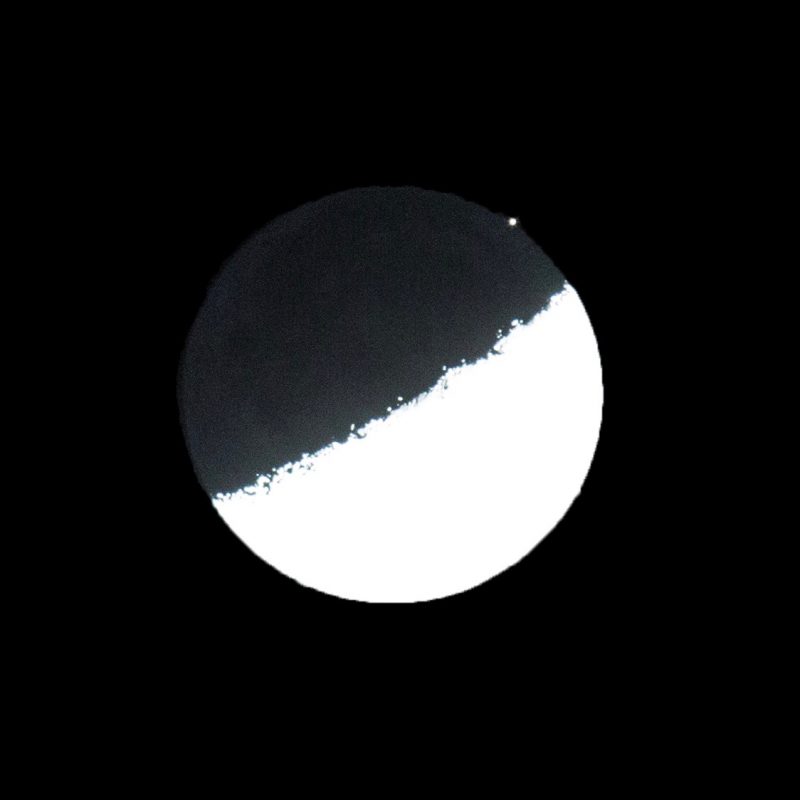
On August 6 and 7, 2018 – in the predawn hours – the waning crescent moon will be shining in front of the constellation Taurus the Bull. Look for the moon in the vicinity of reddish Aldebaran, Taurus’ brightest star. Notice that Aldebaran is part of a V-shaped pattern of stars. This pattern is called the Hyades. Also, look for the little dipper-shaped star cluster known as the Pleiades, aka the Seven Sisters.
To know precisely when Aldebaran and the moon rise into your sky, check out this U.S. Naval Observatory page.

Here’s a gorgeous view of the predawn sky, taken from Australia in late July, 2017 by our friend Yuri Beletsky. You won’t see the bright object here. It’s the planet Venus, which is now up in the west after sunset. But you will see Aldebaran before dawn now (part of the V-shaped Hyades cluster). The little dipper of the Pleiades cluster is to the left of Aldebaran. The large, prominent constellation Orion is on the right.
The lit side of a waning moon always points in the direction that the moon travels in front the constellations of the zodiac. From around the world on the morning of August 6, the waning moon will be moving eastward toward the star Aldebaran. Don’t confuse the moon’s eastward orbital motion with its faster westward motion across our sky. The westward motion is due to Earth’s spin. The eastward motion is due to the moon’s own movement in its orbit. The moon moves in front of the star background at the rate of about one-half degree (one moon-diameter) per hour.
Contrast the position of the moon before dawn on August 6, and then 24 hours later, before dawn on August 7. You’ll see that the moon has moved eastward in front of Taurus.
In fact, as seen from north-central Asia, the moon will occult (cover over) Aldebaran in the predawn sky on August 7. Click here for more about the occultation of Aldebaran.

Occultation of the star Aldebaran by the moon. In this photo – taken March 4, 2017 – Aldebaran is about to disappear behind the dark side of the waxing moon. Photo by Gowrishankar Lakshminarayanan.
Bottom line: Before dawn on August 6 and 7, 2018, look for the moon in the vicinity of the constellation Taurus’ two most prominent signposts: the star Aldebaran and the Pleiades star cluster.
from EarthSky https://ift.tt/1hBEX3G

On August 6 and 7, 2018 – in the predawn hours – the waning crescent moon will be shining in front of the constellation Taurus the Bull. Look for the moon in the vicinity of reddish Aldebaran, Taurus’ brightest star. Notice that Aldebaran is part of a V-shaped pattern of stars. This pattern is called the Hyades. Also, look for the little dipper-shaped star cluster known as the Pleiades, aka the Seven Sisters.
To know precisely when Aldebaran and the moon rise into your sky, check out this U.S. Naval Observatory page.

Here’s a gorgeous view of the predawn sky, taken from Australia in late July, 2017 by our friend Yuri Beletsky. You won’t see the bright object here. It’s the planet Venus, which is now up in the west after sunset. But you will see Aldebaran before dawn now (part of the V-shaped Hyades cluster). The little dipper of the Pleiades cluster is to the left of Aldebaran. The large, prominent constellation Orion is on the right.
The lit side of a waning moon always points in the direction that the moon travels in front the constellations of the zodiac. From around the world on the morning of August 6, the waning moon will be moving eastward toward the star Aldebaran. Don’t confuse the moon’s eastward orbital motion with its faster westward motion across our sky. The westward motion is due to Earth’s spin. The eastward motion is due to the moon’s own movement in its orbit. The moon moves in front of the star background at the rate of about one-half degree (one moon-diameter) per hour.
Contrast the position of the moon before dawn on August 6, and then 24 hours later, before dawn on August 7. You’ll see that the moon has moved eastward in front of Taurus.
In fact, as seen from north-central Asia, the moon will occult (cover over) Aldebaran in the predawn sky on August 7. Click here for more about the occultation of Aldebaran.

Occultation of the star Aldebaran by the moon. In this photo – taken March 4, 2017 – Aldebaran is about to disappear behind the dark side of the waxing moon. Photo by Gowrishankar Lakshminarayanan.
Bottom line: Before dawn on August 6 and 7, 2018, look for the moon in the vicinity of the constellation Taurus’ two most prominent signposts: the star Aldebaran and the Pleiades star cluster.
from EarthSky https://ift.tt/1hBEX3G

Aucun commentaire:
Enregistrer un commentaire